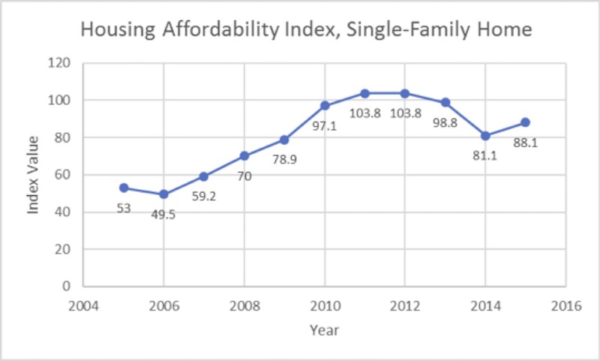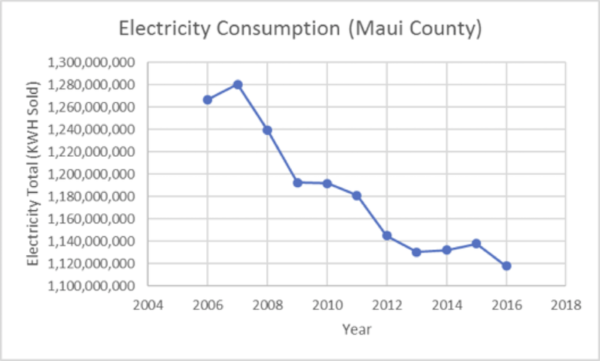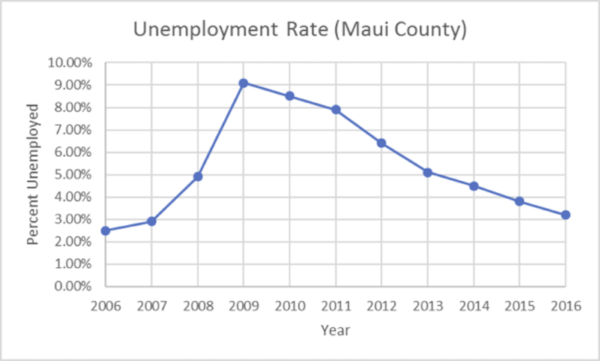Read the April 2020 Quality of Life Indicators Report
Ahh, the laid-back Maui lifestyle! Where did this reputation come from? Is it a thing of the past? Is it only possible for visitors now, or can local residents hope to reclaim some time to spend with family and friends instead of having to work multiple jobs just to survive?
How much time do we spend sitting in traffic? How clean is the water that we swim in? How safe are our food and water? Are there enough surf breaks for everyone, or is it already too crowded? Are there enough parking spots at your favorite park? Do residents welcome visitors and their activities, or do we feel resentful because we are overwhelmed by their numbers and impacts? Do we have a resilient, diversified economy, or do people have to leave Maui whenever the tourist economy has a slowdown?
Quality of life (QOL) is a relative term that refers to the general well-being of people and society. It describes life satisfaction, including everything from physical health, family, education, employment, wealth, finance and the environment.
Measurement of Quality of Life
It is difficult to make objective or long-term measurements of people’s quality of life. In part, QOL depends on the frequency and intensity of their emotional experiences. Expectations also play an important role – what are our goals in life, and how does our current state of affairs measure up to those expectations? These are subjective questions, the answers to which will vary with different individuals. There are many different methods of measuring quality of life in terms of health care, wealth and material goods.
Our Countywide Policy Plan identifies the following strategies that we can pursue to increase our Quality of Life:
- Protect the Natural Environment
- Preserve Local Cultures and Traditions
- Improve Education
- Strengthen Social and Healthcare Services
- Expand Housing Opportunities for Residents
- Strengthen the Local Economy
- Improve Parks and Public Facilities
- Diversify Transportation Options
- Improve Physical Infrastructure
- Promote Sustainable Land Use and Growth Management
- Strive for Good Governance
To read the latest Quality of Life Indicators report, published in April 2020, click here.
Following are graphs of some of the Quality of Life Indicators identified in the Maui Island Plan:
Land Use
Housing Affordability Index (Maui County) [Source: UHERO]
Goal Association: Increase Housing Affordability

*Housing Affordability Index: The housing affordability index compares the price of an “affordable” mortgage to the prevailing median single family home and condominium prices. An index value of 100 means the maximum affordable mortgage for a family with the median income is large enough to purchase a home or condo at the current median price. The methods and formulas used by UHERO to calculate the Hawaii indexes are similar to those used by the National Association of Realtors in their national indexes.
_____________________________________________________________________________
Transportation
Vehicle Miles Traveled [Source: County Data Book]
Goal Association: Reduce Fossil Fuel Consumption

_____________________________________________________________________________
Infrastructure
Electricity Consumption [Source: DBEDT]

_____________________________________________________________________________
Population/Community
Unemployment Rate [Source: UHERO]
Goal Association: QOL Indicator

_____________________________________________________________________________
Tracking the progress of these and other indicators can provide us with insight with which to make course corrections and policy changes when we see things moving in the wrong direction.
Maui Tomorrow has always been focused on preserving the Quality of Life that makes Maui “No Ka Oi.” Another phrase that expresses this very succinctly is “Aloha ʻĀina.” With your help, we will be engaging the community and increasing our emphasis on this vital topic. Mahalo!
